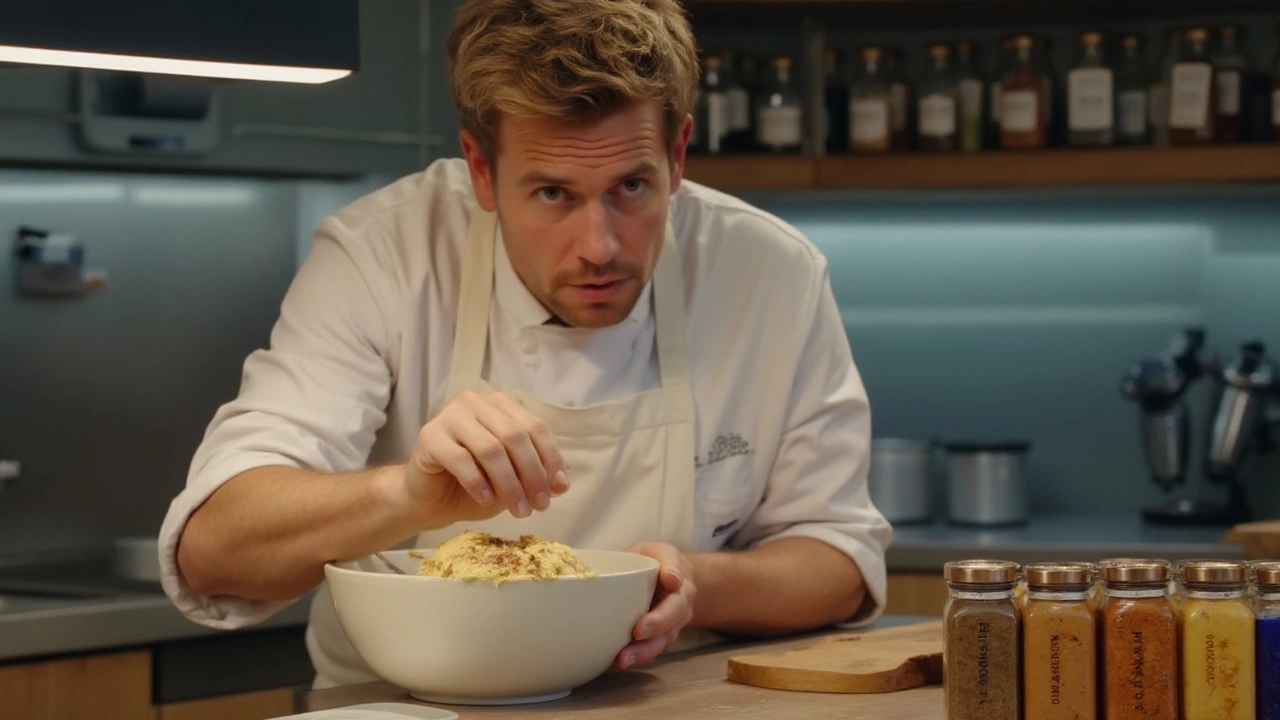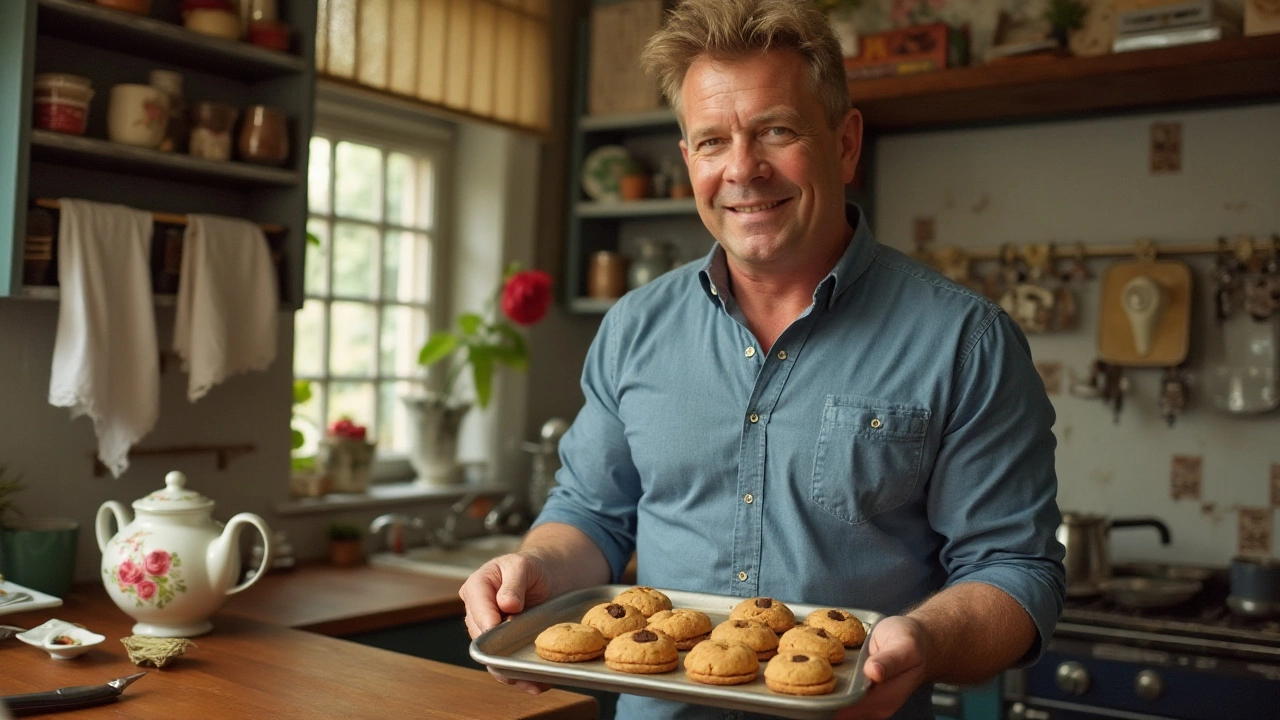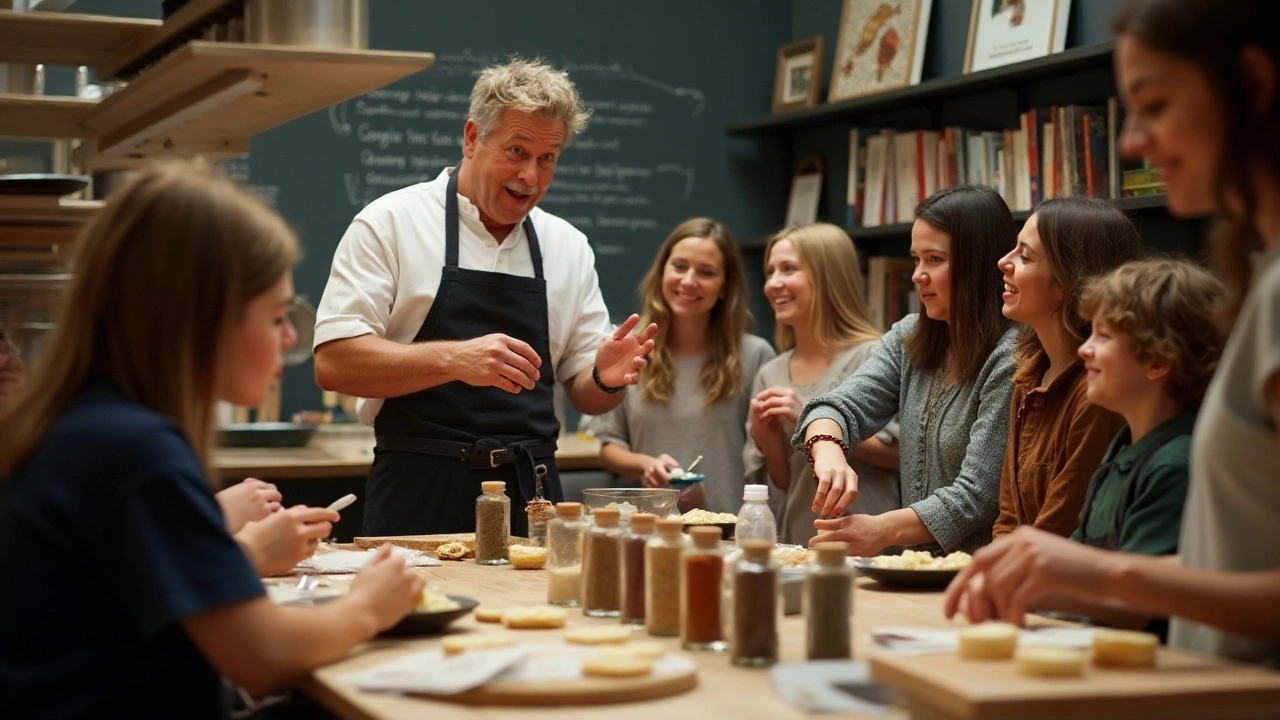
Gordon Ramsay is no stranger to culinary excellence, and when it comes to homemade cookies, his choice of spices can make all the difference. Imagine stepping into your kitchen and being able to bake like a world-class chef, with aromas that fill the room and flavors that surprise your taste buds.
In this article, we're going to delve into the spice rack of one of the most famous chefs, uncovering what makes his cookies stand out. From classic spices to the more unexpected ones, you'll find ways to turn your cookies into something quite special. Whether you're a seasoned baker or a beginner, there's something here that will resonate with you and make those cookies sing with flavor.
The Essential Spices
When it comes to baking delicious homemade cookies, Gordon Ramsay holds a unique perspective on the use of spices, blending traditional choices with a modern twist to enhance flavors dramatically. Among the staples that grace the shelves of his pantry, you will likely encounter the warm, fragrant aroma of cinnamon. This beloved spice is known for its ability to evoke a sense of nostalgia, adding depth and sweetness to cookie dough. Its subtle kick transforms basic cookie recipes into sensational treats that have a lasting impact on anyone lucky enough to enjoy them.
Another essential spice in Ramsay's cookie-making arsenal is nutmeg. With its distinctive, slightly sweet warmth, nutmeg complements cinnamon beautifully, creating a symphony of flavors. Its presence emphasizes the richness of cookies, giving them a more rounded taste. There's a harmony in these spices that Ramsay capitalizes on, deliberately balancing their strong characteristics to create something unforgettable. For those who have tasted Ramsay's cookies, it’s no secret that much of the magic lies in the intricate dance of spices like these.
Beyond the classics, Ramsay often reaches for ginger to add a distinct edge to his cookies. While it may be unconventional for some, ginger adds a zing that livens up the flavor profile, cutting through sweetness with its bold, spicy note. This spice is an excellent way to introduce complexity without overpowering the core flavors that define a cookie. Its inclusion can be witnessed in several of Ramsay’s renowned recipes, where the goal is to surprise and delight with an unexpected touch.
Other spices that often find their way into the famous chef’s cookie creations include cloves and allspice. Cloves, with their strong, sweet aroma, provide an underlying warmth that enriches the entire batch. Allspice, living up to its name, combines flavors of cinnamon, nutmeg, and cloves into a single spice, offering a convenient option for those seeking a one-stop-shop for flavor. Incorporating these into cookie recipes not only diversifies the taste but also speaks to Ramsay's dedication to experimenting with traditional techniques to keep things fresh and exciting.
For those hoping to replicate Ramsay’s magic in their kitchens, understanding the role of these spices — cinnamon, nutmeg, ginger, cloves, and allspice — is crucial. Not only do they serve as fragrance enhancers, but they also elevate cookies both in taste and presentation. Baking tips suggest experimenting with these spices, starting with smaller quantities and adjusting to your taste preferences. It’s this tactile exploration of flavor that turns a regular baking experience into something remarkable, much like what Ramsay achieves in his culinary endeavors. So, gather your ingredients, lay them out thoughtfully, and prepare to immerse yourself in the intricate process of crafting cookies that bear the mark of a true culinary genius.

Unexpected Flavor Twists
When you think about cookies, you probably imagine familiar flavors: vanilla, cinnamon, maybe a hint of nutmeg. But in the world of a culinary genius like Gordon Ramsay, playing with unexpected twists can lead to truly memorable creations. Ramsay is known for his high-energy style and meticulous attention to detail, whether he's on screen or in the kitchen, so it’s no surprise that his homemade cookies are anything but ordinary.
One of the spices you might find unconventional in cookies is cardamom. This spice is often associated with savory dishes or chai tea, but Ramsay uses it to add a warm, citrusy note to his cookie dough. This bright, unexpected spice can elevate a simple butter cookie into something that feels more sophisticated and complex. It’s a little trick that can make you re-think your go-to recipes. Ramsay may also incorporate star anise to infuse his cookies with a subtle licorice flavor. Though potent, when used sparingly, it adds an exotic flair to the sweet treats without overpowering them.
A pinch of cayenne pepper is another twist Ramsay sometimes applies, injecting a gentle heat that hits the palate just as the sweetness subsides. This balance creates a cookie with depth, encouraging you to reach for just one more, attempting to decipher what that mysterious spice might be. Such experiments might seem bold, but they show us how important it is to taste and adjust as you go. Baking, much like all cooking, is about playing around and getting creative, and cooking secrets like these can genuinely enhance your baking experience.
Imagine you’re about to take a bite, and just then, you pick up a faint but unmistakable hint of lavender. While this herb is often relegated to decorative uses or aromatherapy, it can lend a delicately floral touch when folded into cookie batter. Ramsay's technique usually involves grinding the dried flowers into a powder, infusing the dough with just enough essence to tantalize without overwhelming. The key is in the balance, knowing that too much can lead to a soapy taste, while just the right amount whispers of sunshine fields and summer blooms.
“The key to spice is knowing how much to add and when to stop,” Ramsay once said in an interview. “Too little and you might not notice it, too much and you've turned a masterpiece into confusion.”
Lastly, exploring the boundaries of sweetness, Gordon Ramsay might use smoked paprika in small amounts. It sounds bizarre, to say the least, but the smokiness pairs wonderfully with chocolate, giving even classic chocolate chip cookies a new character. With such combinations, Ramsay challenges our preconceptions of baking by demonstrating how spices can draw out flavors that might otherwise stay dormant. It’s this forward-thinking approach that makes each batch a new adventure.

Using Spices Creatively
When embarking on a baking journey with Gordon Ramsay's influence, one begins to understand that spices are not just ingredients to toss into a mixture; they are vital components that can elevate even the humblest cookie recipe into a culinary masterpiece. Gordon Ramsay himself has often been quoted emphasizing the importance of understanding each spice's role, not only in creating sweetness but in enhancing depth and complexity.
Cookies, a beloved treat worldwide, offer a versatile canvas for experimenting with spices, allowing home bakers to indulge in creativity. Homemade cookies benefit significantly from the careful consideration of spice blends. Traditional cookies might include a dash of cinnamon or a hint of nutmeg, but Ramsay encourages venturing beyond the familiar. One could explore the gentle warmth of cardamom, a spice known for its distinct, aromatic essence that complements chocolate-based cookies especially well. Imagine a fresh-out-of-the-oven batch of chocolate chip cookies infused with cardamom, curly aromatics mingling with cocoa. It's a tweak that surprises and delights everyone who takes a bite.
Ramsay often plays with savory spices in sweet contexts, demonstrating the seductive allure of such contrasts. Known to elevate his cookie recipes, he has been credited with integrating touches of rosemary or even thyme into shortbread cookies. These herbs ground the sweetness and offer intriguing layers to the flavor profile. Indeed, as one delves into the world of spices creatively, it becomes clear that the possibilities are truly endless.
Don't be afraid to experiment and risk a blend of sweet and spicy; consider the fiery kick of cayenne pepper married with the rich sweetness of molasses cookies. Such combinations create an irresistibly intriguing experience and an unexpected twist on traditional favorites.
"Cooking is about passion; it's about discovering flavors. Don't let rules confine you," Ramsay once said in an interview, encouraging bakers to embrace innovation in their kitchens.
Exploring combinations allows bakers to create signature cookies that carry a personal stamp. Ramsay’s TV shows often highlight this playful experimentation, pushing bakers to push boundaries and explore unfamiliar territories. To start, try incorporating five-spice powder—a mix of star anise, clove, Chinese cinnamon, Sichuan pepper, and fennel—into gingerbread cookies to create a complex and robust spice profile that instantly pays homage to Asian culinary traditions. Such a blend not only enhances flavor but provides depth and intrigue.
For those ready to dive deeper, a promising area to explore is the use of citrus zest in combination with spices. Lemon or orange zest can brighten the flavors of homemade cookies, particularly when paired with spices like cinnamon or ginger.
Consider experimenting with a lemon zest and ginger combination in a sugar cookie recipe. The zing of the citrus complements the warm bite of ginger, creating a refreshing yet comfortingly familiar profile. In the kitchen, creativity can be sparked by mixing small quantities of different spices to check how they blend and aromatically interact before committing to your cookie dough.
This experimental stage cannot only lead to exciting discoveries, but it also fosters a deeper understanding of how specific spices can be enhanced by other ingredients. By drawing inspiration from Gordon Ramsay, one can plainly see that creative usage of spices is key to transforming baking endeavors into memorable experiences.

Baking Tips from Ramsay
When it comes to baking, Gordon Ramsay has a unique set of tips and tricks that elevate the art of creating homemade cookies into something truly extraordinary. His first piece of advice is always about starting with the best ingredients. Ramsay believes that the quality of your ingredients can greatly impact the final product. He insists on using fresh, often organic products, especially when it comes to spices. Vanilla beans, for example, are chosen over extract, as they offer a purer, more robust flavor profile. He once said, "Cooking is about passion, so it may look slightly temperamental in a way that it's too assertive, too much of the color changing, but once you take the time to get closer to those flavors, you start to understand their subtlety and their necessity."
Another brilliant tip from Ramsay involves his meticulous attention to the mixing process. He suggests mixing butter and sugar until they're perfectly creamy, which can take upwards of 10 minutes with a stand mixer. This step is crucial as it incorporates air into the dough, providing that desired lightness in cookies. Ramsay often compares this creaming process to a classical music composition, where each minute detail contributes to the symphony of flavors you'll witness post-baking. In one of his masterclasses, he uses a timer to ensure precision, emphasizing that consistency in texture is as crucial as the exact flavor.
When it comes to baking cookies, timing and temperature are key. Ramsay recommends baking on the middle rack, generally at around 175°C (350°F), but warns bakers to consider the quirks of their ovens. Preheating is essential, as is keeping an eye on the cookies every few minutes to avoid disappointment. A valuable tip he offers is to slightly underbake for perfectly chewy cookies, as they will continue to cook on the hot tray once removed from the oven. This attention to temperature ensures a cookie that is golden on the outside yet delicately soft inside, leaving a lingering impression of warmth and indulgence with every bite.
Gordon Ramsay isn't shy about blending traditional techniques with a modern twist. He encourages bakers to experiment with their creations, such as introducing a hint of sea salt to the cookie dough. This can bring out the sweet flavors more richly, providing complexity rarely found in standard recipes. Ramsay suggests developing a 'feel' for the dough, suggesting you might need an extra sprinkle of flour on humid days or perhaps a bit more liquid if the mixture feels too stiff. As whimsical as it sounds, his intuitive approach affirms that baking is equally a science and an art. Curious bakers can witness this by joining his well-reviewed online classes.
For those who seek that extra touch of elegance, Ramsay talks about the potential of garnishing cookies post-bake. The chef often recommends adding just a hint of flavored glaze or dusting of powdered sugar, depending on the intended richness. It’s about adding an element that invites pure creativity and personalization into the mix, much like a painter adds a signature flourish to canvas. His most famous cocoa-infused powdered sugar creates a slight contrast between flavors, offering an unexpected, delightful surprise as you bite into the final product. Aiming for perfection yet embracing individuality in each batch of cookies is ultimately what contributes to the artful mastery of his cookies.